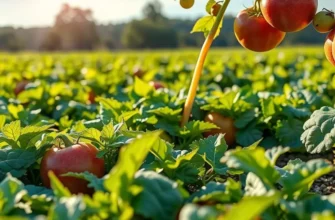Berries are a delicious and nutritious addition to any diet, but they have a notoriously short shelf life. Knowing how to properly store and manage your berries can significantly extend their freshness and reduce waste. This guide offers straightforward, actionable tips to ensure your berries remain ripe and flavorful for longer, so you can enjoy them in meals, snacks, or on their own.
Choosing the Right Berries

Selecting fresh berries is an art that requires keen attention to detail. The key lies in understanding the attributes of ripeness and quality for each type of berry. Let’s dive into the specifics, ensuring your berries last longer once they reach your home.
Firstly, examine the color of the berries. Vibrant colors usually indicate ripeness. For strawberries, a deep red is ideal. Blueberries should have a uniform dusty blue color, indicating they’re ripe and ready to eat. With blackberries, the darkest black hue is a sign of ripeness, while green or red indicates they are under-ripe.
Next, pay attention to the texture. Ripe strawberries should be firm yet plump, never mushy. Blueberries, though generally resilient, should not be too hard, which may suggest they are not mature. For raspberries and blackberries, aim for a gentle firmness that suggests juiciness without being soft or leaking juice.
Aroma is another significant indicator. Ripe, fresh berries should emit a sweet fragrance. If you can’t smell their fragrance, they may not be ripe, or they might have lost their freshness. Berries should also not have a fermented smell, which indicates over-ripeness and imminent spoilage.
Check for any mold or any other signs of decay. Mold often develops from one compromised berry and spreads to others in the pack. Inspect all visible berries and if one seems off, it’s better to choose another pack. Ensuring no mold is present is crucial in maintaining the longevity of your berries.
Packaging plays a crucial role. If possible, choose berries that are packaged in containers with appropriate ventilation. Well-aerated packaging helps prevent moisture buildup, which can lead to mold. Transparent packages also allow for easy inspection of the entire batch, so give it a good shake to see any hidden problems.
Be mindful of the seasonality of berries. Purchasing berries in their natural season typically ensures better quality and freshness. Local farmers’ markets often supply seasonal berries that haven’t traveled far, which means they are fresher and often picked at the peak of ripeness.
Utilizing these strategies can not only extend the lifespan of your picked berries but also enhance the quality of your meals. For more on effective food storage, check out these eco-smart kitchen storage tips to reduce waste successfully.
By mastering the art of berry selection, you not only contribute to reducing food waste but also ensure you’re enjoying the best nature has to offer.
Effective Storage Techniques

Berries are a delightful addition to any diet, but their short shelf life can be a challenge. Knowing how to store them correctly can significantly extend their freshness, reducing waste and keeping them tasting their best.
Begin by keeping your berries unwash until you’re ready to eat them. Washing introduces moisture, which can accelerate mold growth. When you’re ready, gently rinse them under cold water; the fragile nature of berries necessitates careful handling.
For storage, refrigeration is key. Remove any damaged or overly ripe berries immediately as they can spoil the entire batch. Line a container with a paper towel to absorb excess moisture and place the unwashed berries inside. Cover the container loosely to allow for proper airflow, as berries can spoil if they suffocate.
If you want to maximize longevity, consider the right containment methods for different berry types. For strawberries and raspberries, a single layer in a shallow container works best. Stacking these delicate berries can lead to bruising. For blueberries, opt for a breathable container; their tougher skin can handle a bit more weight without bruising.
Pantry storage is not ideal for berries; however, if you must, opt for a cool, dark space and use them within one to two days. Conversely, freezing berries extends their usability by several months. To freeze, spread them in a single layer on a baking sheet before transferring them into a sealed container. This prevents them from clumping together.
For a deeper dive into sustainable storage practices, consider exploring eco-smart kitchen storage. This guide offers insights that can harmonize with effective berry storage, ensuring freshness and reducing environmental impact.
Each berry variety has its own requirements. Blackberries enjoy a life of solitude, benefiting from a moisture-free environment. Sprinkle a bit of vinegar on them before rinsing thoroughly to ward off mold. Strawberries, on the other hand, thrive in an even cooler part of the fridge, such as the crisper drawer.
Ultimately, using the proper storage techniques, you can savor every berry, bite after bite, without the worry of premature spoilage. Embrace these strategies to enjoy your berry bliss for longer.
Final words
Extending the freshness of berries is essential not only for enjoying their delicious flavors but also for minimizing waste. By selecting high-quality berries and employing effective storage techniques, you can significantly prolong their shelf life. Remember to inspect your fruits regularly, store them correctly, and prioritize those that are freshest. With these practical tips, you can enjoy the full benefits of berries in your diet without the guilt of throwing away spoiled produce. Good management leads to a healthier lifestyle, minimizing waste one delicious snack at a time.







